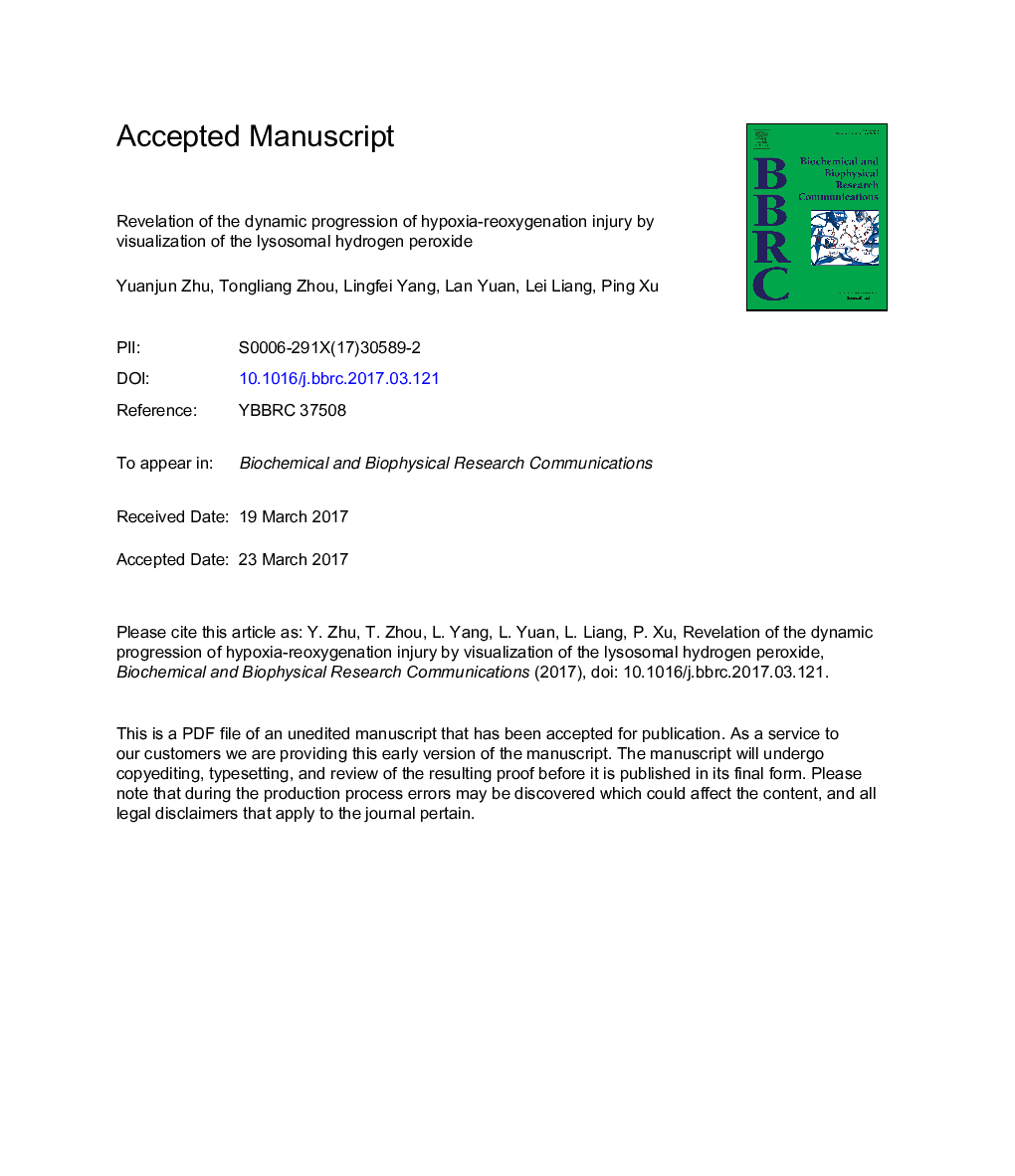| Article ID | Journal | Published Year | Pages | File Type |
|---|---|---|---|---|
| 5505926 | Biochemical and Biophysical Research Communications | 2017 | 18 Pages |
Abstract
Hydrogen peroxide (H2O2) plays an important role in pathological conditions, such as cerebral ischemia-reperfusion (I-R) injury. Fluorescent probes may serve as valuable tools to detect the amount, temporal and spatial distribution of H2O2 in living cells. To investigate the role of lysosomal H2O2 involved in cerebral I-R injury, we designed and synthesized a lysosome-targetable two-photon fluorescent probe ztl-4, through expansion and substitution of the original pyridazinone scaffold, conjugation of electronic-donating aromatic ring and precise terminal modification of the alkyl linker. The probe ztl-4 exhibited fast, sensitive and highly selective response toward H2O2. ztl-4 could image exogenous H2O2 in SH-SY5Y cells and brain slices. In addition, ztl-4 was located in lysosomes with high colocalization coefficient compared with LysoTracker. ztl-4 was further applied for detecting the endogenous generation of H2O2 in SH-SY5Y cells subjected to oxygen and glucose deprivation (OGD) or OGD/reoxygenation (OGD/R) injury. Both OGD- and OGD/R-induced cell injury caused a time-dependent increase of H2O2 production within lysosomes. Moreover, OGD/R-treated cells showed much more amount of H2O2 than OGD-treated cells, indicating that reoxygenation will promote H2O2 accumulation in lysosomes of post-hypoxia cells. Therefore, the probe is suitable for monitoring the dynamic changes of lysosomal H2O2 in cells.
Related Topics
Life Sciences
Biochemistry, Genetics and Molecular Biology
Biochemistry
Authors
Yuanjun Zhu, Tongliang Zhou, Lingfei Yang, Lan Yuan, Lei Liang, Ping Xu,
